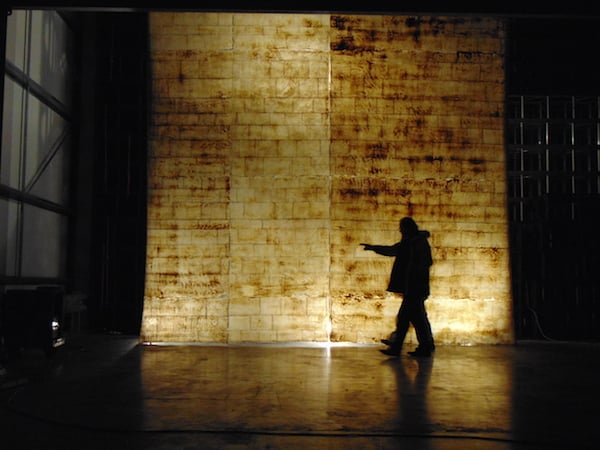
Photo: by Nick Chapman
Artist, architect, and conservationist Jorge Otero-Pailos, in conjunction with Artangel, is going to wrap London’s Houses of Parliament in latex for his work in the series The Ethics of Dust (2016) opening on June 29.
Suspended from the beamed roof of Westminster Hall will be a luminescent 50-meter long and 28-meter high latex cast of the house’s internal east wall. The layer of latex will have lifted the dust from the wall of the hall, which, at 1000 years, is the oldest section of the Houses of Parliament.
Artangel and Otero-Pailos have worked in conjunction with the restoration team as they not only restored the building but also delicately cleaned the stonework. Otero-Pailos collected the particles of dust and dirt and the latex used to remove it.
As the pattern of the bricks and marks on the wall will be visible, the artist explains that the work is meant to take the past and place it in front of the viewer, asking them to think about what may come next. “Now that were are talking about the Anthropocene and the new geological era that’s man made, that’s a certain vision of the future,” Jorge Otero-Pailos told artnet News on the phone.
“The rocks that are being formed today are different to those that were formed 1000 years ago when Westminster Hall was built,” he added. “For me it is really important that we think about time in a more expanded way not in these small sections but to think what we want to share across generations. It’s important to me that we have that conversation.”
Jorge Otero-Pailos (2016). Photo: courtesy Jorge Otero-Pailos.
Westminster Hall was completed in 1099 and the dust removed may well include the particles from the blitz and the Great Smog of 1942. The hall was also used to the trials of Guy Fawkes and King Charles I.
Otero-Pailos completed a similar project at the Doge’s Palace in Venice in 2009, which was then displayed at the palace at the 53rd Venice Biennale.
“Two gothic buildings, two seats of naval empires, sitting on the water… They were key buildings in understanding the relationship between architecture and nature,” Otero-Pailos explained. “I’m really interesting in using buildings as a way to closely observe nature. It doesn’t seem obvious at first because when you look at a building you see something man made.”
Attributed to Thomas Sandby Westminster Hall and New Palace Yard (1795). Photo: ©Parliamentary Art Collection
The title is taken from the English critic and philosopher John Ruksin’s book The Ethics of the Dust in which he expressed his views against the restoration of such buildings as it could cause damage to the stone. At the time he fought to stop the restoration of both the Houses of Parliament and the Doge’s Palace in Venice with which he was “obsessed.”
“[Ruskin’s time], the beginning of the 19th Century was the beginning of a lot of sciences, conservation, climatology… Ruskin, along with other British pioneers, were looking at the environment, art, buildings, and using buildings as a way to understand how nature was functioning and changing,” Otero-Pailos told us. “This work is a way to pick that conversation up again.”
Michael Morris and James Lingwood, directors of Artangel said via a statment: “After several years of quiet and careful planning, we are delighted that Jorge Otero-Pailos’s latex casting of Westminster Hall’s east elevation will be experienced by those who pass through it over the summer.”